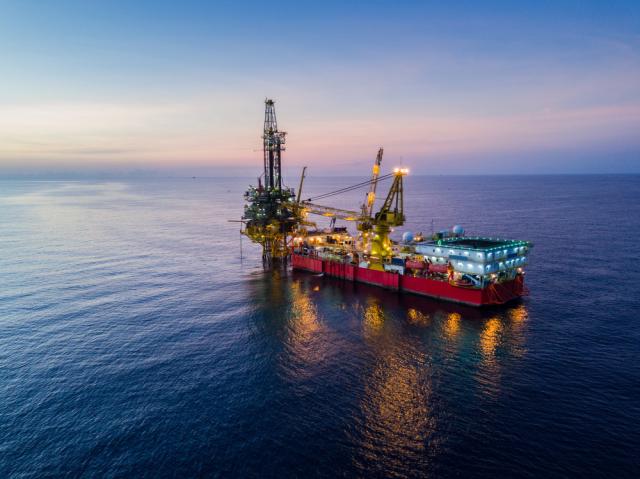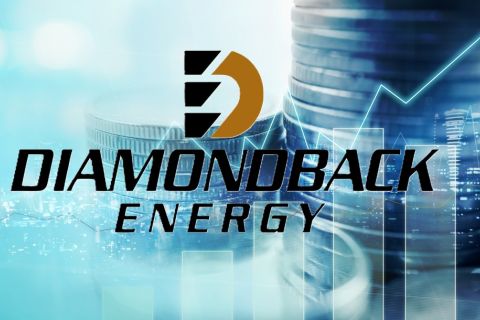
Source: James Jones Jr./Shutterstock.com
Oil and gas explorers were off to a good start this year making discoveries until market conditions forced activity cutbacks. The future could hold more uncertainty as factors such as emissions targets come into play, analysts say.
“In an ideal world, the future should look rosy for explorers and developers around the world; however, the world is not quite that simple,” Graeme Bagley, head of exploration and appraisal for Westwood Global Energy Group, said on a recent webinar. “We’re seeing a number of different factors coming into play now.”
He turned back to pre-COVID 19 headlines focusing on emissions targets factoring into investment decisions, societal pressure on climate change and a halt by some countries—namely New Zealand, France and Ireland—in frontier exploration rounds. Assuming the current oil price crash and global pandemic is a short-term crisis, he expects such concerns will be resurrected.
“What we can see is that long-cycle oil is now less fashionable,” Bagley said.
Other reasons come to mind as well.
While some frontier play discoveries can move to first oil within three to four years like the Exxon Mobil Corp.-operated Liza offshore Guyana and the Kosmos Energy-BP Plc’s Tortue offshore Mauritania and Senegal, it takes most frontier discoveries about 8 ½ years on average to make that journey, according to the firm’s data. In some instances, it’s longer.
“We’ve seen companies such as Kosmos making very public statements and recently Woodside as well saying they will no longer invest in long cycle frontier exploration,” Bagley said, noting companies are thinking about the “implications of the growing climate change agenda.”
Kosmos, which is known for its frontier exploration work, in February said it aims to make its operations carbon neutral by 2030. The company also plans to increase the weight of natural gas in its portfolio.
The environmental, social and governance movement also means strategies will shift, he said.
The transition to gas, considered a clean fuel that is popular with investors, has gained momentum in recent years. There is, however, already a lot of it.
“We estimate about 25 billion barrels of gas has been discovered since 2008 that remains stranded,” Bagley said. “It’s a great thing to explore for. But is the market going to be there? Is the infrastructure going to be there onshore?”
What does still make sense are short cycle, high-return oil developments, Bagley said.
Companies pursuing exploration have taken the infrastructure-led exploration (ILX) approach, searching for hydrocarbons in mature basins. Some are even pursuing ILX in super basins, a basin that has either produced at least 5 billion barrels of oil equivalent or has at least that much in recoverable reserves.
There are still opportunities within reach for some, despite today’s market conditions.
Counter-cyclic investment for certain companies with deep pockets, he added, could allow for expanding exploration footprint, particularly for NOCs as smaller companies pull back.
“Companies that don’t rebuild their portfolios in the time of distress such as today may find it hard to get back into business as usual,” Bagley said.
Although no one is certain how the future will change the exploration sector, the analyst said one thing that likely won’t change are the “molecules, the rocks, the hydrocarbons, the oil and the gas in the ground.”
Looking Back
For the most part, oil and gas explorers started the year with success.
“We got off to quite a good start to the year. There were 37 high impact wells drilled in the first four months and that was the highest recorded since 2014,” said Jamie Collard, senior analyst for Westwood. “Commercial success rates reached again a high of about 35%, and there was a good amount of oil discovered.”
High-impact discoveries have been reported in Suriname-Guyana with Apache Corp. and Total’s Sapakara West-1 and Maka Central-1 and the Gulf of Mexico with Equinor’s Monument along with others in the Campeche Salt and Colville basins, he said.
Activity, however, is slowing down as operators defer or cancel plans to drill wells following the latest oil price crash and pandemic. Already about seven of the original 22 key wells to watch globally this year in proven and frontier plays have been deferred or canceled. These include Tullow Oil’s Goliathberg North, Svenska’s Atum, Petronas’ Jove, Eni’s Milma, Aker BP’s Stangnestind, Total’s Mailu and Equinor’s Stromlo, according to Collard.
“There’s already been 37 wells completed. Our estimate now for the rest of 2020 is that we’re expecting somewhere along the lines of maybe 60 to 65 high impact wells to complete,” Collard said. That is down to levels seen in 2016.
Supermajors have been driving high-impact drilling this year, led by Total followed by Royal Dutch Shell, Exxon Mobil and BP. Equinor, Petronas and Qatar Petroleum have also been among the more active companies, he said.
The strong start to 2020 followed continued improvement seen in 2019, which Collard said was driven by a large number of natural gas discoveries. Most of the discoveries were in deep water, clastic reservoirs and emerging plays. The largest finds—those over 1 Bboe—were gas. The operators were nearly all NOCs, supermajors or large majors.
There were 28 high-impact discoveries recorded in 2019.
Other Notables
Westwood studied exploration trends from 2015 to 2019. Among the firm’s other notable themes were that exploration success has been highly concentrated geologically. The top 10 of 342 plays tested delivered 64% of the discovered resources. The top three where the MSGBC, Suriname-Guyana and Nile Delta—all Upper Cretaceous plays.
Research also showed that stratigraphic traps are becoming more important, leading to most of the discoveries. Stratigraphic trap targets doubled from 2019 to 2015, rising to about 30%, according to Collard.
Analysts also found that the fast-follower strategy is not working for emerging plays. As Keith Myers, president of research for Westwood, pointed out, 90% of the 57 Bboe of resources in plays opened since 2010 was found in frontier acreage.
High-impact exploration increased nearly 40% in 2019, compared to the past five years, with 93 high-impact wells completing, Collard said.
“This is being driven by maturing and mature plays and mainly in shallow water,” he added, noting its mainly related to activity in the North Sea. “There was a slight increase in the number of emerging play wells drilled about going from 25 to 26 and frontier wells actually increased to 35,” the highest since 2014.
However, 51%—or 74 Bboe—of high-impact discoveries found since 2008 remains undeveloped, Collard said.
“I think it’s fair to say that this is probably one of the most difficult times to be reviewing exploration performance. The period where we’re covering 2015 to 2019 was the five years after the last oil price crash,” said Myers. “We were entering 2020 with a degree of optimism, with increasing activity. Now we’re all sitting in lockdown, demand has fallen through the floor and companies are busy cutting back exploration expenditure again. So, it’s a difficult time.”
Recommended Reading
Hess Corp. Boosts Bakken Output, Drilling Ahead of Chevron Merger
2024-01-31 - Hess Corp. increased its drilling activity and output from the Bakken play of North Dakota during the fourth quarter, the E&P reported in its latest earnings.
Petrie Partners: A Small Wonder
2024-02-01 - Petrie Partners may not be the biggest or flashiest investment bank on the block, but after over two decades, its executives have been around the block more than most.
CEO: Coterra ‘Deeply Curious’ on M&A Amid E&P Consolidation Wave
2024-02-26 - Coterra Energy has yet to get in on the large-scale M&A wave sweeping across the Lower 48—but CEO Tom Jorden said Coterra is keeping an eye on acquisition opportunities.
CEO: Magnolia Hunting Giddings Bolt-ons that ‘Pack a Punch’ in ‘24
2024-02-16 - Magnolia Oil & Gas plans to boost production volumes in the single digits this year, with the majority of the growth coming from the Giddings Field.
Endeavor Integration Brings Capital Efficiency, Durability to Diamondback
2024-02-22 - The combined Diamondback-Endeavor deal is expected to realize $3 billion in synergies and have 12 years of sub-$40/bbl breakeven inventory.






